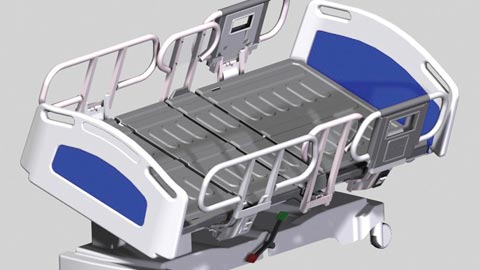3D design process facilitates ongoing product improvement
3D design process facilitates ongoing product improvement

Case Study
3D design process facilitates ongoing product improvement
LOS PINOS
Medical equipment company boosts productivity and shrinks development cycle time by 50 percent using Solid Edge
Medical products for multiple markets
Industrias Metálicas LOS PINOS S.A. (LOS PINOS) is a leading supplier of medical and hospital equipment. With more than 40 years of experience developing solutions for national and international customers, LOS PINOS is the first Colombian company to be nationally certified with the ICONTEC seal of approval for electromedical equipment. LOS PINOS’ headquarters cover more than 8,000 square meters (more than 86,000 square feet) and includes warehouses, a production facility, sales and exhibition rooms, as well as offices.
In the international market, LOS PINOS competes on quality, as well as price. “Our main challenge is to be constantly updating and improving our designs to be competitive within two very distinct markets: the high value-added markets of the United States, Germany and Canada, and the price-sensitive Asian markets, China in particular,” says José Gabriel Pino, the company’s manager.
LOS PINOS’ equipment is constantly being redesigned, either to improve the product’s overall performance or to meet a customer’s specific requirements. Additionally, before exporting products, the equipment must be adapted to each country’s requirements. For example, for equipment sold in Colombia, the company accommodates doctors’ requests for certain functionality and specific features.
Digital assembly models reduce cycle time
As part of an ongoing effort to improve products while reducing production costs, LOS PINOS decided to look for software that would allow it to design in 3D. “The software we used before only worked with two dimensions, so when we would go to the plant to set up the assembly processes, things would not always fit,” explains Pino. In that case, the company would create one or more prototypes to make the necessary assembly adjustments. This caused the company to devote more time and materials to that particular project, increasing its development costs.
